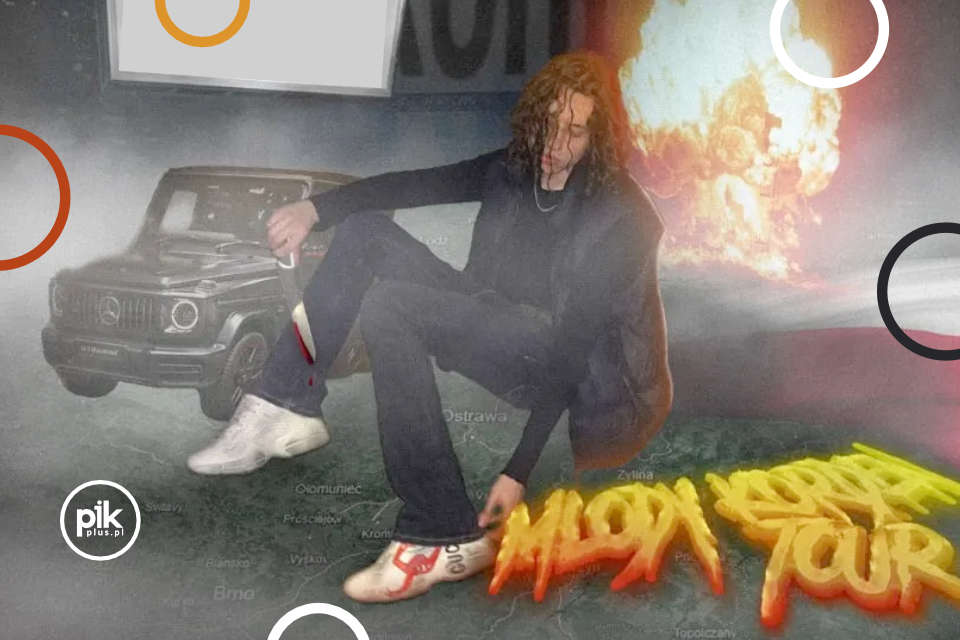All 8 Spider-Man live-action movies are returning to theaters this spring, in a series Sony is calling Spider-Mondays. We’ve updated and reposted this essay on Spider-Man’s best movie arc in conjunction with the re-release.
By the end of Sam Raimi’s 2002 movie Spider-Man, secret superhero Peter Parker (Tobey Maguire) isn’t any better off personally than he was at the beginning of the film, erstwhile he was an awkward nerd without superpowers. Peter’s Uncle Ben is dead, and his Aunt May is struggling. His would-be mentor Norman Osborn (Willem Dafoe) became a villain and died while trying to execution Peter, and Norman’s son, Peter’s erstwhile best friend, Harry (James Franco), seems prepared to follow in his dad’s footsteps. And Mary Jane Watson (Kirsten Dunst), the love of Peter’s life, has admitted she returns his feelings, but he can’t reciprocate. He walks away, knowing that “with large power comes large responsibility.” If he stays actual to his morals, he can’t halt being Spider-Man, and he can’t let the function to endanger those he cares about.
Cue the ending: a thrilling web-slinging sequence, an American flag consuming half the background in a post-9/11 “We will be strong!” bit of iconography. There’s a smash cut to the credits, then Danny Elfman’s incredible Spider-Man score juxtaposed with “Hero,” the lead single from the soundtrack, shouted by Nickelback’s Chad Kroeger and Saliva’s Josey Scott.
It sounds messy, like a clumsy assortment of 2002 culture closing out the superhero blockbuster that went on to inform all the superhero blockbusters that followed it for the next 20 years. And honestly, it kind of is. The inclusion of catchy tie-in album music coupled with specified an apparent cultural motion both date the movie and render it a victim of its own franchising. But it’s a testament to the strength of Spider-Man’s character arc that all this sound doesn’t drown out the communicative series of a young man learning he must do what’s right, even if it’s seldom easy. It’s the finest moral resolution of any superhero film.
Sam Raimi’s Spider-Man and his 2 sequels — 2004’s Spider-Man 2 and 2007’s Spider-Man 3 — are consumed with the thought of heroism as an inherently lonely form of sacrifice. It permeates all major arc of Raimi’s trilogy, emotional or otherwise. Even characters who could easy be rendered ancillary or one-note, like Mary Jane or Alfred Molina’s Otto Octavius, labour to do what they know is right, alternatively than what they know will be easy.
So in spite of the ramping scale of the films’ peculiar effects, and a revolving door of villains that only grew more larger-than-life with each outing, the tiny cast of central characters remains empathetic on a tremendous level. And many of them, even the villains, yet realize that in order to be virtuous, they must quit selfishness. Peter Parker reaches that same conclusion multiple times, through multiple scenarios that make it increasingly hard to stick to that virtue.
Photo: Columbia Pictures
This sounds like beautiful standard superhero stuff, but in 2002, it stood out as a singular subject in movies, and it felt amazing even in the sequels that followed. The closest the era’s another superhero movies came to relatable moral messages was in 1978’s Superman, with Pa Kent telling a young Clark Kent that he landed on Earth for “a reason,” and that while it’s hard to defy showing off and achieving individual glory with his powers, he must yet stay resolute. Compare that to the Tim Burton Batman films, which represent the Dark Knight as a violent recluse utilizing his caped crusade as a way to work through any apparent issues, or the X-Men series, which has always been about shifting the ethical goal posts.
The Dark Knight films build to a Bruce Wayne who feels comfortable adequate to leave Gotham in individual else’s hands. Sony’s 2012 Spider-Man reboot, with Andrew Garfield in the title role, primarily focuses on how Peter and Gwen Stacy’s relation balances ambition with selfishness. But that series’ effort to out-world-build Disney meant the protagonists’ doomed romance was forced to compete with communicative excess.
And while the first giant planned arc of the Marvel Cinematic Universe ends with Iron Man nobly sacrificing himself in the fight against Thanos, Tony Stark’s decade of highly public moral struggles as an arrogant billionaire playboy arms dealer just don’t feel as applicable to most audiences as Peter’s lonely interior battles. Built on the premise of collecting all of Marvel’s celebrated characters under the same roof, the Marvel Cinematic Universe movies have seldom operated on the smaller, individual scale of Raimi’s Spider-Man films, and they’ve never had the same sense of moral angst. specified is the burden of constantly rubbing shoulders with Thor and Captain America — even the most interior struggles gotta contend with the toy box of indefinite franchising.
All of which makes Raimi’s Spider-Man trilogy into something more admirable than another “save the city” (or “save the world”) quests. Peter has no 1 to thin on, really, and whenever he falls, he must conjure the resolve to get back up on his own. His closest relationships are all trapped in the push-pull required of individual who has to put his life on the line all day to tackle a Venom or a Sandman.
And his financial resources are minimal — a item that plays a immense function in the first Stan Lee/Steve Ditko comics but became increasingly distant in the character’s later cinematic incarnations. Throughout Raimi’s trilogy, Peter’s desolation never improves — he begins the communicative in an unassuming home in Queens and ends in a tiny flat in Manhattan, 1 he can barely afford, and 1 that Raimi frames as a sign of Peter’s eternal inability to relax or to make peace with the dueling sides of his life.
:no_upscale()/cdn.vox-cdn.com/uploads/chorus_asset/file/23425981/SpiderMan2Train.jpeg?resize=696%2C344&ssl=1)
Photo: Columbia Pictures
This blue-collar existence grants Peter a relatability with the people of fresh York. He’s an inspiration to them, whether they’re throwing bricks at the Green Goblin in the climax of the first movie or protectively standing between him and Doc Ock. Harry Osborn is yet so inspired by Peter’s dedication that he decides to abandon his obsession with vengeance in favour of decency. Raimi’s films turn Peter’s isolation and poorness into an everyman cause, indicating that goodwill can come from any direction, if a individual or group feels called upon, but that the chances for misery are besides comparatively ubiquitous.
Raimi’s Spider-Man trilogy is far from hopeless. fewer scenes in the past of blockbusters are as humanely optimistic as the 1 where a cross-section of fresh Yorkers pull Peter into the train he nearly killed himself to save. (Raimi’s visual metaphors are truly wonderful, with Spider-Man 2 providing constant reminders of Peter being torn between his desires and his work — and erstwhile saving the train nearly rips him in half, that’s just underlining how he’s felt internally throughout Raimi’s story.)
While the passengers in Spider-Man 2 honor Peter and promise not to divulge his secret identity, the films are besides fast to remind him (and the audience) that hope is tricky. The mixed reactions of NYC residents in the first film’s montage, J. Jonah Jameson’s publishing war on Spidey’s reputation, and the crowd cheering Spider-Man’s entrance in the final conflict in Spider-Man 3 all show how fragile his position in society is. A light at the end of the tunnel isn’t certain, but in the brighter moments, it’s a fortuitous side effect of Peter’s trials.
The villains in the first 2 films are a large example of this open-ended theme. Norman Osborn is just 1 of the possible mentors Peter looks at with aw-shucks respect, but Norman is yet undone by his avidity for achievement. In the second film, we get Otto Octavius, a fellow scientist who at first can be seen as the finish line for Peter’s technological career, if he manages to get his individual and romanticist life in order. But like Norman, Otto yet goes full villain erstwhile his dreams devour his reason. In the end, though, Otto is granted the chance at redemption, and he takes Spider-Man’s motivational cue to sacrifice himself in order to save the city and his own spirit.
The 3rd movie doesn’t return to this kind of relation — instead, it offers Peter a glimpse at what his life would be like if things did all come easy for him. The Venom symbiote which turns his suit black gives him increased strength, but besides removes his pesky conscience, letting him become his own wish-fulfillment fantasy. In a plotline most remembered for the shots of Peter dancing down a fresh York City sidewalk while he lives out his dorkiest impulses, Peter transforms into a villain, just like his past mentors. Eventually, though, he recoils in horror at his errors and rips the alien-infected suit off his body, realizing he’s broken the pact he’d made for himself at the end of the first film, and that giving into selfishness has hurt the people he cares about.
:no_upscale()/cdn.vox-cdn.com/uploads/chorus_asset/file/23425992/SpiderMan3Venom.jpeg?resize=696%2C358&ssl=1)
Photo: Columbia Pictures
The ongoing war between gratification and sacrifice is possibly no more evident than in Aunt May’s speech about heroism in Spider-Man 2. It’s simultaneously mythic (“Everybody loves a hero. People line up for them. Scream their name,”) and mortal (“I believe there’s a hero in all of us that keeps us honest, gives us strength, makes us noble, and yet allows us to die with pride”).
The fact that it’s delivered to Peter by an aged female who’s picking up the pieces of her life after the bank takes distant her home is another extrapolation of the theme: Everyone from advanced school kids to the elderly, from superheroes to civilians, has to deal with the same moral questions. No 1 is allowed freedom from the choice between centering their lives on themselves and choosing to aid another people. all 1 of the films’ public displays of courage and connection from NYC residents turn their scenes into miniature versions of the films’ arcs. The only difference in Spider-Man’s situation is that his version of that choice involves costumed terrorists.
Each of the Spider-Man films peaks with an embrace. In the first one, it’s Mary Jane clutching Peter as he decides he must forgo love to be a hero. In the second film, it’s Peter and Mary Jane reuniting after she’s fled from her tepid engagement to tell Peter she wants to love him, no substance what problems his superhero identity will bring. And in the last scene of the 3rd film, Peter and Mary Jane dance, both unsure of what the future holds.
In this 3rd movie, there’s no triumphant kiss or epic swing through the skyscrapers of the city to assure you that yes, things are emotionally complicated right now, but there are Spider-Man fast food toys to sell, and that’s equally important. It’s besides a far cry from the adorably nostalgic dance shared by Steve Rogers and Peggy Carter at the end of Avengers: Endgame. In his dance, Rogers finds the payoff for a life dedicated to, well, avenging. But Peter’s dance is simply 1 more offer of an embrace, a reminder of their work to effort and do good in a tumultuous world.
Spider-Man 3 fades to black on Peter’s face, showing a man who’s consistently proved he’s imperfect, but that he’s willing to keep trying to do what’s right. And it wraps up the trilogy’s themes not with reconciliation, but with the promise that what this dance stands for will last forever. Peter wasn’t meant to lose his uncle and his mentors and be tempted by evil so he could 1 day be victorious over all his burdens.
:no_upscale()/cdn.vox-cdn.com/uploads/chorus_asset/file/23426043/SpiderMan3.jpg?resize=696%2C391&ssl=1)
Photo: Columbia Pictures
Instead, each challenge he faces becomes a teaching moment. These events build Peter’s capability to be courageous, honest, and open to forgiveness and the possible of being forgiven. “I will always be Spider-Man,” Peter tells Mary Jane in Spider-Man 2. He means he will never arrive at the perfect juncture of a comfortable life, but that he vows to be strong adequate to proceed the fight, the embrace, and the dance.
That war between the noblest way and the easiest 1 surely isn’t over by the time Tobey Maguire’s incarnation of Peter Parker appears in Spider-Man: No Way Home. erstwhile this Peter meets his own universe’s Otto Octavius, whispers of the Danny Elfman score play while Peter tells Ock that he’s “trying to do better.” It’s 1 of the film’s many nods to Spider-Man 2, the top Marvel movie of all time.
But it’s besides a mention to the sweeping nonsubjective of Peter’s life. The “great responsibility” of Peter’s moral mantra is more than just fighting evil — it’s the guiding star of anyone with the will to make the planet even a small bit better. That’s the ethos of the Spider-Man trilogy. erstwhile the credits rotation and that Chad Kroeger song starts blaring, it isn’t a sign that Spider-Man has won his battles. It’s just a sign that he’s promised to keep fighting.

![Sara James zdaje egzamin ósmoklasisty. Pochwaliła się wyjątkową stylizacją na tę okazję [FOTO]](https://m.natemat.pl/048e7988855ee6157e706c6ed75bc7bc,1500,0,0,0.jpg)













